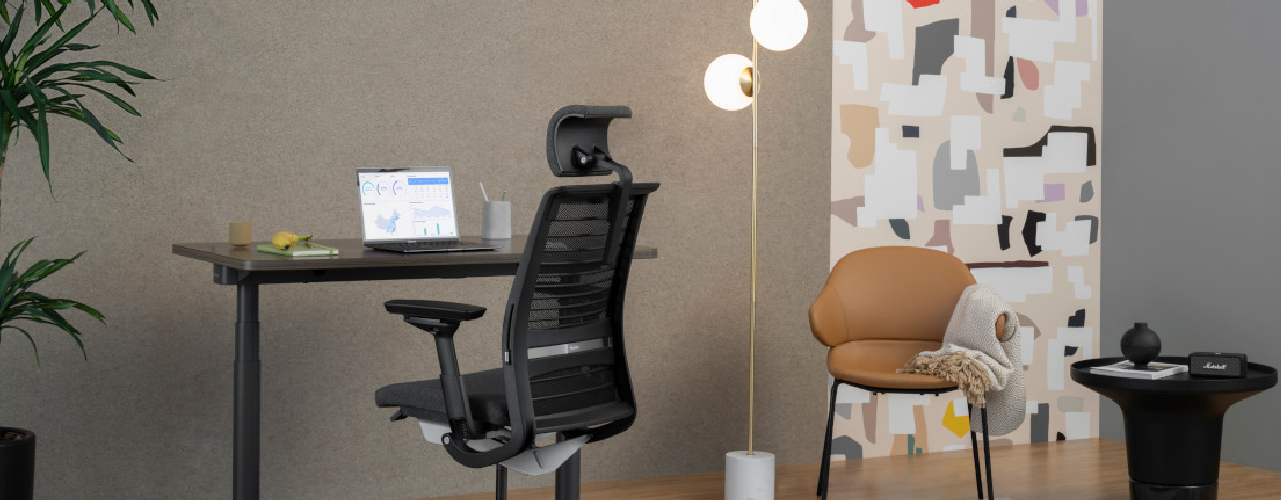Are you looking to improve your productivity in the office? Are you struggling with designing a perfect workspace that will help keep you comfortable throughout long days at your desk? One key factor to consider is setting the correct height for your desk, as this can make all the difference when it comes to ergonomics and overall comfort.
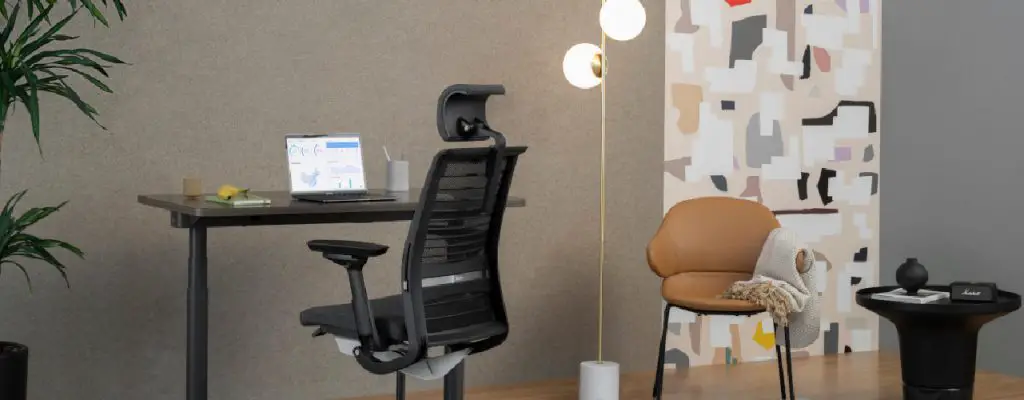
Here, we understand how easy it can be to overlook such an important aspect of workspace design; however, with our tips and advice on how to set autonomous desk height setting autonomous desk height, even novice DIYers can find their perfect workstation setup! Read on for more information about what exactly autonomous desk heights are, why they’re so important for optimal working conditions and postures, and how you can set them up in no time.
What is Autonomous Desk?
Autonomous desks are adjustable standing desks that can be set to any height, allowing users to switch between sitting and standing positions as desired. With this technology, you don’t have to worry about having a single desk height setting – your work area can easily transition from low to high or vice versa as needed. This is especially beneficial for those who spend long hours at their desk, allowing them to change positions frequently and reducing the risk of developing any posture-related aches and pains.
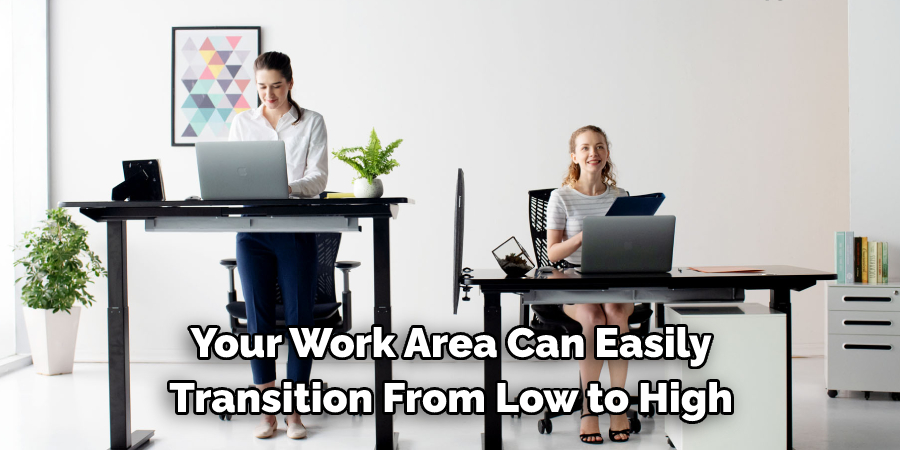
Why is Setting Autonomous Desk Height Important?
When you’re setting up your workstation, it’s important to ensure that it’s set up correctly for optimal comfort and posture. When it comes to autonomous desk height, a good rule of thumb is that the keyboard should be around elbow level when standing, with elbows at 90° angles. This allows for an ergonomic typing position which can help you stay comfortable throughout long days in the office.
11 Step by Step Guidelines on How to Set Autonomous Desk Height
Step 1: Measure the Distance
Before you start adjusting the height, it’s important to measure the distance from the floor to your current desk height. Having an idea of this can help you when it comes time to adjust the height. If you don’t have a measuring tape, you can also use a book or other object that has an inch metric measurement.
Otherwise, try to estimate the distance. It doesn’t have to be exact. You just need to have a good idea of how high the desk is currently. But if you want an accurate measurement, it’s best to use a measuring tape.
Step 2: Adjust The Desk Height
The next step is to adjust the height of your autonomous desk. This will vary based on the model you have, but generally, most desks can be adjusted by using a lever or switch located near the bottom of the desk. If you’re using a manual lever, push or pull the lever until your desired height is reached. If you have an electric switch, press the switch until the height indicator shows your desired number.
Step 3: Check Your Posture
When setting your autonomous desk height, it’s important to check your posture and make sure that your arms are at approximately 90° angles when typing. If not, adjust the height until this is achieved for optimal ergonomics.
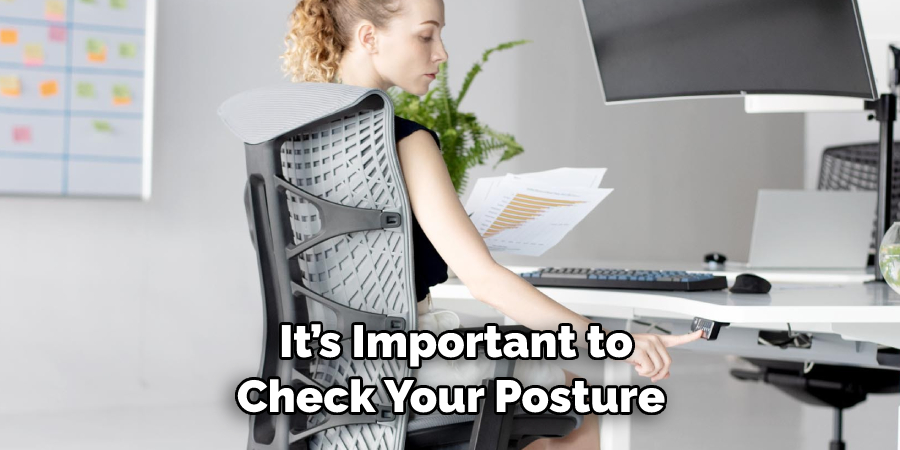
But also make sure that your wrists and hands remain straight in order to prevent any strain or discomfort while typing. It’s important to note that the height of your desk may vary depending on how tall you are, so make sure to adjust accordingly.
Step 4: Test It Out
Once you’ve set your desired autonomous desk height, it’s time to test it out! Spend at least 10 minutes working at the new desk height and take notes of how comfortable (or uncomfortable) you feel – this will help you determine if the height is correct for your body type.
If you notice any discomfort, it may be necessary to tweak the settings until it’s just right. After all, the goal is to make sure you have a comfortable workstation that will allow you to be productive for many hours. It should be easy to move around and make adjustments if needed.
Step 5: Adjust as Necessary
Based on your test, if you find that the desk height isn’t quite right for you, start adjusting again until you find a comfortable position. It may take several tries before settling on a perfect fit, so don’t be discouraged!
But once you find the right height, you should be able to stay comfortable and productive for hours. If you find that the desk is too low, remember to adjust it in small increments to ensure that your posture stays correct. However, if it’s too high, you can adjust the height in larger increments.
Step 6: Make Sure Your Feet are Flat On The Ground
When standing at your autonomous desk, make sure to place both firmly on the ground – this will help prevent any strain or discomfort in your legs and lower back. It’s also important to ensure that your feet are placed shoulder-width apart in order to maintain proper posture.
If your feet don’t reach the floor, you can add a footrest for extra support. But make sure to make any adjustments in small increments so you can find a comfortable fit. This will ensure that you stay productive and comfortable while working.
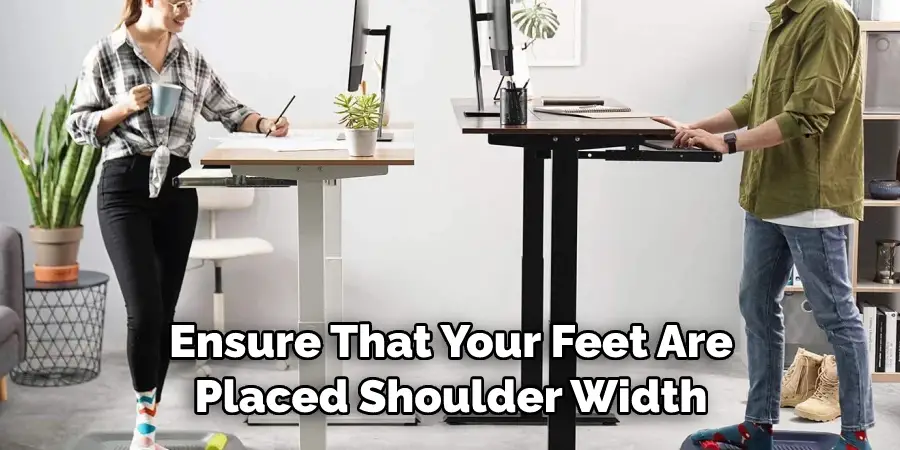
Step 7: Keep Your Monitor At Eye Level
It’s important to keep your monitor at eye level when setting the height of your autonomous desk. This will help you maintain good posture overall and reduce the risk of developing any neck or shoulder pain. It’s also important to make sure that your monitor is not too close or too far away – the correct distance should be between 18 and 24 inches.
Otherwise, you may end up straining your eyes or experiencing fatigue. You may also want to adjust the screen brightness and contrast settings in order to reduce any strain on your eyes.
Step 8: Keep Your Wrists In A Neutral Position
When typing, ensure that your wrists remain in a neutral position – this means keeping them straight and not bending them up or down at an uncomfortable angle. If you find that your wrists are bent, try adjusting the height of your desk in small increments until it’s comfortable.
Additionally, you may want to purchase a keyboard tray in order to keep your wrists in the correct position. It’s also important to take regular breaks and stretch throughout the day in order to prevent any strain.
Step 9: Adjust The Height Of The Keyboard And Mouse
Depending on how tall you are, it may be necessary to adjust the height of both the keyboard and mouse in order to maintain an ergonomic posture while working. If needed, make sure that these two peripherals remain around elbow height while sitting or standing.
Otherwise, you may experience wrist pain or discomfort in the long run. If you find that the height of these two items is not comfortable, make sure to adjust them in small increments in order to find a fit that works for you. It may take several tries, but eventually, you should be able to find the perfect positioning. But if you’re still having trouble, don’t be afraid to ask an occupational therapist for help.
Step 10: Make Sure You’re Sitting or Standing Comfortably
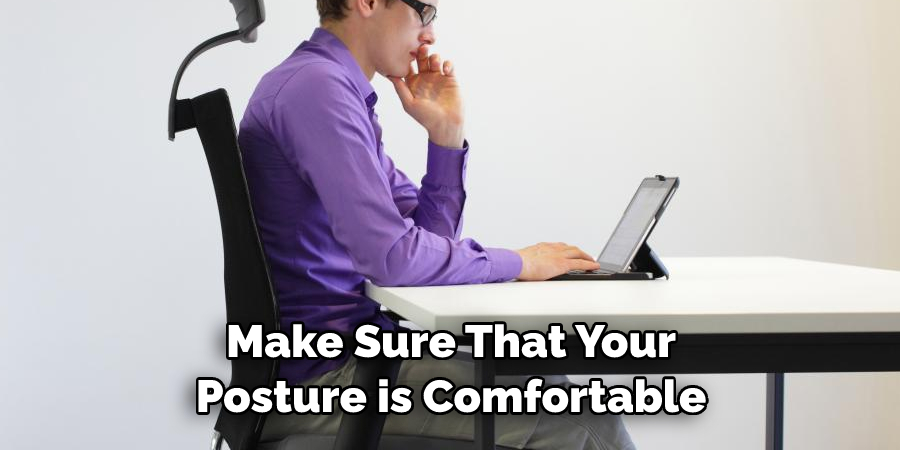
No matter how often you adjust the height of your autonomous desk, it won’t matter if you aren’t sitting or standing comfortably. Always make sure that your feet are firmly planted on the floor and that your body is in a relaxed position before getting to work.
After making all the necessary adjustments, take a few minutes to make sure that your posture is comfortable and that you feel supported. If not, adjust your seat, monitor, and desk height until you find the perfect fit. But remember to make any changes in small increments so that you don’t strain yourself.
Step 11: Re-evaluate Every Few Months
As we grow and change over time, so does our ideal ergonomic workspace. Be sure to re-evaluate the height of your autonomous desk every few months to ensure that it is still comfortable for you! Although it may not require frequent adjustments, it’s important to make sure that you are always working in a supportive and comfortable environment.
If you find that it’s no longer working for you, make sure to adjust the height of your desk in order to maintain good posture and reduce the risk of any repetitive strain injuries. This will help keep you safe and productive in the long run. But remember to make any adjustments in small increments so that you don’t strain yourself.
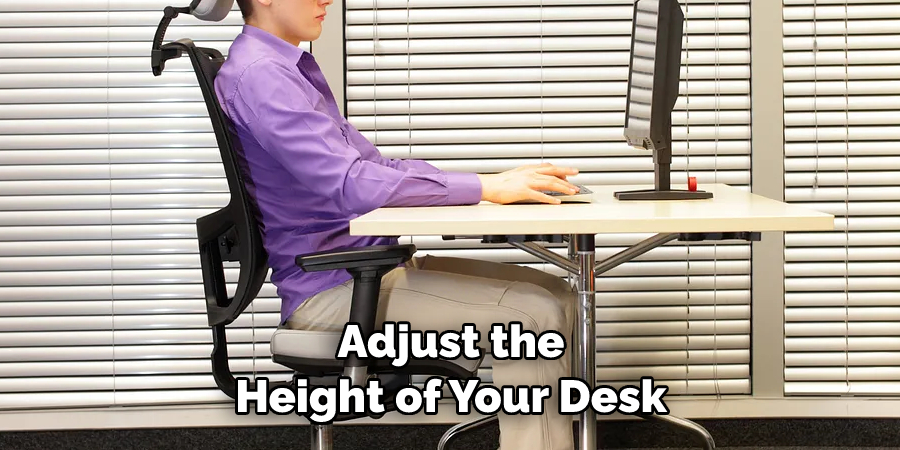
By following these simple steps, you can easily set up a comfortable workspace with an autonomous desk that will help you stay productive and healthy. It’s important to remember that your health is just as important as your work, so adjust the height of your desk in order to keep a good posture for optimal ergonomics.
Do You Need to Use Professionals?
If you’re having difficulty setting the height of your autonomous desk, it may be beneficial to hire a professional who can help you adjust the desk for optimal ergonomics. They can provide useful advice on how to set up your workspace in order to maximize efficiency and comfort. Additionally, they can also offer tips for staying healthy while working at an autonomous desk.
No matter what type of workspace setup you choose, remember that taking care of yourself is just as important as getting work done! Adjusting the height of your autonomous desk is one way to ensure that you stay comfortable and productive throughout the day.
Frequently Asked Questions
Q: What is the Ideal Desk Height for Ergonomics?
A: The ideal desk height for ergonomics depends on your body type and size. Generally, it should be set to a level where your elbows are at 90 degrees when seated, and your wrists remain in a neutral position. It may also be helpful to have a professional help you adjust the height as needed.
Q: How Often Should I Re-evaluate My Autonomous Desk Height?
A: We recommend that you re-evaluate the height of your autonomous desk every few months to ensure that it is still comfortable and provides optimal ergonomic support. This will help keep you productive and healthy while working!
Q: Is It Important To Have The Right Desk Height?
A: Absolutely! Having the right desk height is essential for ergonomics and can help prevent strain or discomfort in your body. Additionally, it can also help you stay productive and efficient throughout the day.
Q: Can I Adjust My Autonomous Desk Height On My Own?
A: Yes, you can adjust the height of your autonomous desk on your own using the instructions outlined in this article. However, if you’re having difficulty setting the height, it may be beneficial to hire a professional who can help you with the process.

Conclusion
In conclusion, desk height makes a huge difference when it comes to posture and overall comfort. Setting an autonomous desk height takes a little bit of effort but with the right tools and techniques, you can get it just right. With the help of an armless adjustable chair, a L-shaped tape measure and an adjustable desk that can switch heights at will, you can easily find the optimal height for your workspace. Begin by finding the optimal seat height then measure from that point up to the table top and make any necessary adjustments accordingly.
By following these simple steps on how to set autonomous desk height and taking the time to experiment with different heights, you should be able to find the perfect position for sitting at your desk comfortably. Don’t forget to take regular breaks throughout your day as well! Setting up a good ergonomic workstation doesn’t have to be painful or complicated – with a little preparation, you can ensure that your health isn’t compromised while you work or study.

